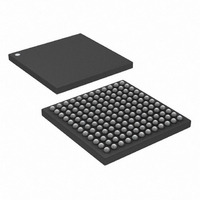DS3154+ Maxim Integrated Products, DS3154+ Datasheet - Page 12

DS3154+
Manufacturer Part Number
DS3154+
Description
IC LIU DS3/E3/STS1 QUAD 144CSBGA
Manufacturer
Maxim Integrated Products
Type
Line Interface Units (LIUs)r
Datasheet
1.DS3151.pdf
(61 pages)
Specifications of DS3154+
Number Of Drivers/receivers
4/4
Protocol
IEEE 1149.1
Voltage - Supply
3.135 V ~ 3.465 V
Mounting Type
Surface Mount
Package / Case
144-CSBGA
Lead Free Status / RoHS Status
Lead free / RoHS Compliant
Table 4-C. Receiver Pin Descriptions
RPOSn/
RNEGn/
RMONn
RDATn
RCLKn
RLCVn
RLOSn
NAME
RXPn,
RXNn
RTSn
RJAn
I/O
O3
O3
O3
O
I
I
I
I
Receiver Analog Inputs. These differential AMI inputs are coupled to the inbound 75Ω coaxial cable
through a 1:2 step-up transformer
Receiver Clock. The recovered clock is output on the RCLK pin. Recovered data is output on the
RPOS/RDAT and RNEG/RLCV pins on the falling edge of RCLK (RCINV = 0) or the rising edge of
RCLK (RCINV = 1). During a loss of signal (RLOS = 0), the RCLK output signal is derived from the
LIU’s master clock.
Receiver Positive AMI/Receiver Data. When the receiver is configured to have a bipolar interface
(RBIN = 0), RPOS pulses high for each positive AMI pulse received. When the receiver is
configured to have a binary interface (RBIN = 1), RDAT outputs decoded binary data. RPOS/RDAT
is updated either on the falling edge of RCLK (RCINV = 0) or the rising edge of RCLK (RCINV = 1).
Receiver Negative AMI/Line-Code Violation. When the receiver is configured to have a bipolar
interface (RBIN = 0), RNEG pulses high for each negative AMI pulse received. When the receiver is
configured to have a binary interface (RBIN = 1), RLCV pulses high to flag code violations. See
Section
RCLK (RCINV = 0) or the rising edge of RCLK (RCINV = 1).
Receiver Tri-State Enable (Active Low). RTS tri-states the RPOS/RDAT, RNEG/RLCV, and RCLK
receiver outputs. This feature supports applications requiring LIU redundancy. Receiver outputs
from multiple LIUs can be wire-ORed together, eliminating the need for external switches or muxes.
The receiver continues to operate internally when RTS is low.
0 = tri-state the receiver outputs
1 = enable the receiver outputs
Receiver Loss of Signal (Active Low, Open Drain). RLOS is asserted upon detection of 175 ±75
consecutive zeros in the receive data stream. RLOS is deasserted when there are no excessive
zero occurrences over a span of 175 ±75 clock periods. An excessive zero occurrence is defined as
three or more consecutive zeros in the DS3 and STS-1 modes or four or more zeros in the E3
mode. See Section
Receive Monitor-Preamp Enable. RMON determines whether or not the receiver’s preamp is
enabled to provide flat gain to the incoming signal before the AGC/equalizer block processes it. This
feature should be enabled when the device is being used to monitor signals that have been
resistively attenuated by a monitor jack.
0 = disable the monitor preamp
1 = enable the monitor preamp
Receiver Jitter Attenuator Enable
0 = remove jitter attenuator from the receiver path
1 = insert jitter attenuator into the receiver path
(Note that TJA = 1 takes precedence over RJA = 1.)
6
for further details on code violations. RNEG/RLCV is updated either on the falling edge of
DS3151/DS3152/DS3153/DS3154 Single/Dual/Triple/Quad DS3/E3/STS-1 LIUs
6
for additional details.
12 of 61
(Figure
1-1).
FUNCTION











